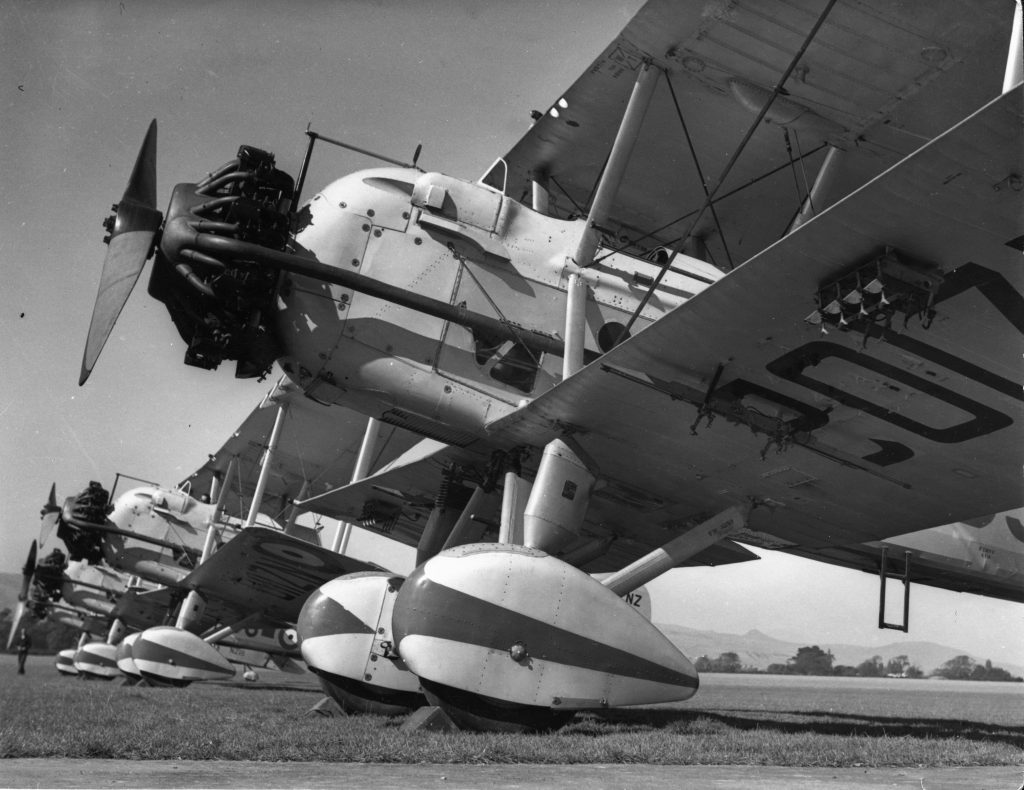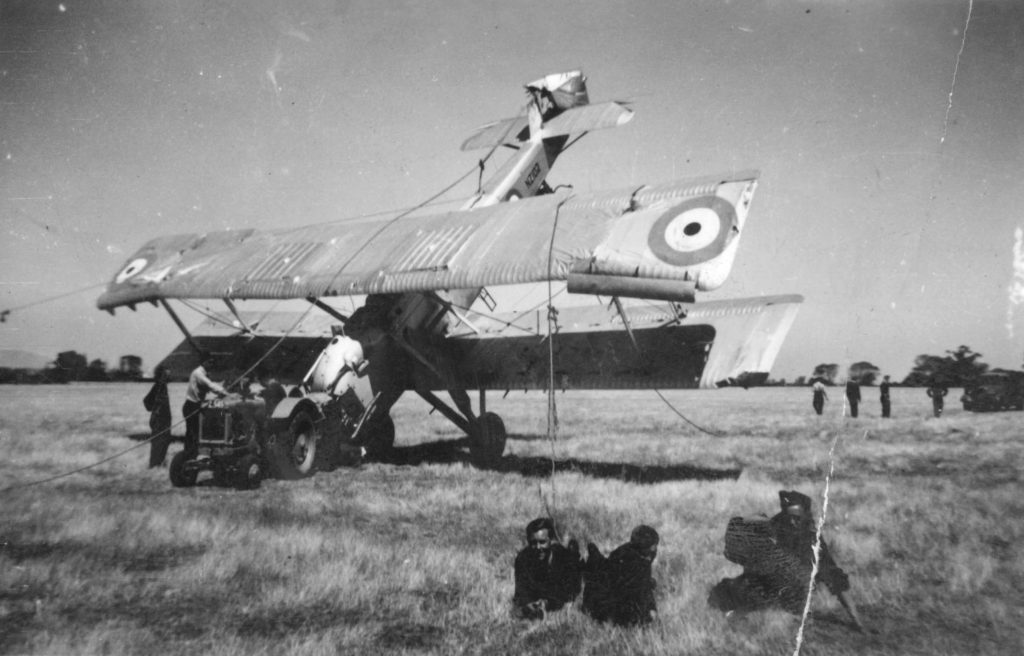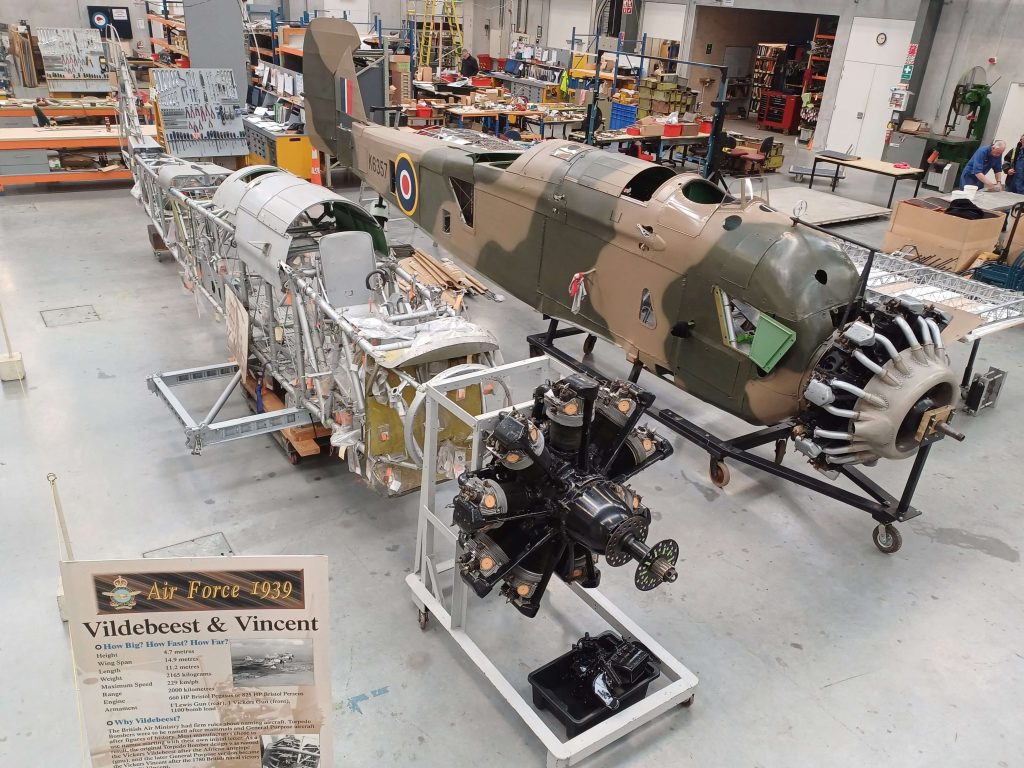Christmas has come early at the Air Force Museum thanks to a generous loan from an Auckland family. This is an update on the restoration project of our Vickers Vildebeest. If you haven’t already, we recommend reading part one and part two first.

The Subritzky family has loaned a Vickers Vincent aircraft from its collection to the team at the Air Force Museum in Wigram to help with restoration work on Vickers Vildebeest NZ102.
The two aircraft now sit side-by-side in our hangar, with the Vincent providing a 3D model for the restoration team to study.
The loan will make the painstaking restoration of one of the rarest aircraft in the world much easier.
The Vincent and Vildebeest are identical in almost every detail, so Don and Steve Subritzky’s loan aircraft will help the museum speed up the work. NZ102 is the most complete Vildebeest airframe in existence.

There is a lot of work to be done though, with no engineering drawings.
It is a bit like a 10,000-piece jigsaw puzzle with no plans, and not much of a cover photo either.
While the team has made good progress, having the Vincent to compare is a boost and the museum team can’t thank the Subritzky family enough for the help.
Vildebeest NZ102 has been in the Wigram collection for more than 20 years, along with minor components from other aircraft of the same type.
The team has been searching the world for drawings and reference material for many years and gathered as much information as possible.
The Vildebeest first entered service with the RAF in 1932, and the Vincent is a later development of the design, going into service in 1934. The aircraft share the same engine, a Bristol Pegasus.
The main difference is that Vildebeest’s torpedo bay was replaced in the Vincent with an auxiliary fuel tank.
The Air Force Museum’s NZ102 was one of 12 brand-new Vildebeest torpedo bombers received by the RNZAF in 1935. Another 27 ex-RAF aircraft were added to the air force in 1940-41, making a total of 39. The RNZAF operated 62 Vincents alongside the Vildebeests.
NZ102 has a fascinating service history. On 2 May 1938, a young pilot called Leonard Trent took the controls of NZ102 during his pilot training.
Trent flew in NZ102 as pilot or passenger 13 times, and he would go on to serve with distinction in the RAF during World War 2.
He was awarded the Victoria Cross in 1945, one of only three members of the RNZAF to be so honoured.
On 23 February 1939, a young trainee pilot named David ‘Sealy’ Clark was ordered to fly solo in NZ102 and climbed to 15,000 feet for 30 minutes. On descending, he forgot to pump the brakes and noticed the brake pressure gauge was a little off. A perfect landing was soon compromised by the failure of the wheels to rotate, sending NZ102 into a slow and undignified somersault onto its back. Clark was uninjured.

The rarity and historical significance of the Vildebeest means that it is one of the most important military aircraft held in a museum collection anywhere in New Zealand. The Air Force Museum prioritised this challenging project because of its significance to the development of the RNZAF.
The Vildebeest was at the cutting edge of design when it first flew in 1928, but by the time World War Two broke out it was obsolete.
During its time with the RNZAF, the Vildebeest was used in a variety of roles including coastal defence, general reconnaissance, aircrew training and target drogue towing.
Its Bristol Pegasus engine developed 635 HP, giving it a top speed of 230 km/h. It had a range of 2,010 km and an absolute ceiling of 19,000 ft.
Its crew consisted of a pilot, navigator and an observer. It was armed with a fixed forward firing .303 Vickers machine gun and a flexible rearward firing .303 Lewis gun. It could carry 500kg of bombs or a single torpedo.
The British Air Ministry insisted that manufacturers had to name torpedo bombers after mammals. Vickers liked to name its aircraft starting with a ‘v’, and so the name Vildebeest was coined.





